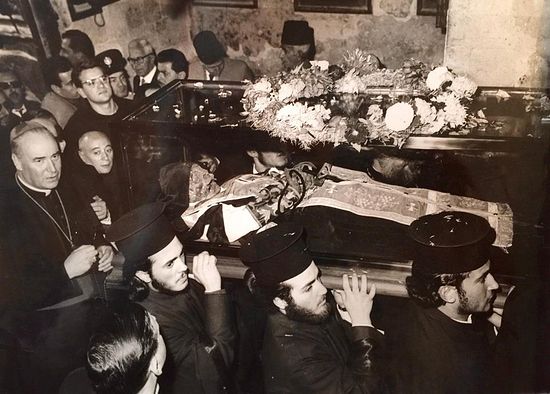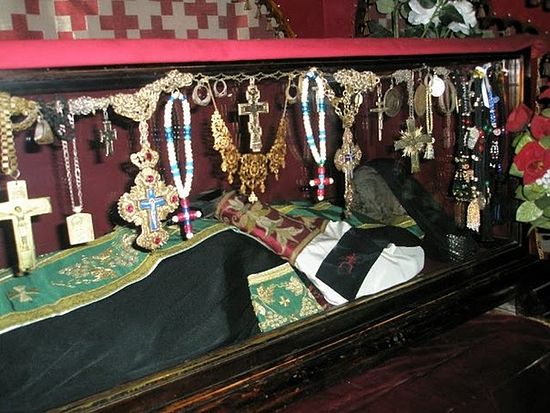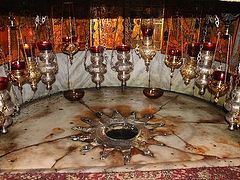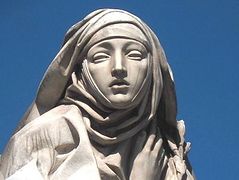Saint Savva the Sanctified was born in the fifth century at Cappadocia of pious Christian parents, John and Sophia. His father was a military commander. Journeying to Alexandria on military matters, his wife went with him, but they left their five-year-old son in the care of an uncle. When the boy reached eight years of age, he entered the monastery of St. Flavian located nearby. The gifted child quickly learned to read and became an expert on the Holy Scriptures. In vain did his parents urge St. Savva to return to the world and enter into marriage.
When he was seventeen years old he received monastic tonsure, and attained such perfection in fasting and prayer that he was given the gift of wonderworking. After spending ten years at the monastery of St. Flavian, he went to Jerusalem, and from there to the monastery of St. Euthymius the Great (January 20). But St. Euthymius sent St. Savva to Abba Theoctistus, the head of a nearby monastery with a strict cenobitic rule. St. Savva lived in obedience at this monastery until the age of thirty.
After the death of the Elder Theoctistus, his successor blessed St. Savva to seclude himself in a cave. On Saturdays, however, he left his hermitage and came to the monastery, where he participated in divine services and ate with the brethren. After a certain time St. Savva received permission not to leave his hermitage at all, and he struggled in the cave for five years.
St. Euthymius attentively directed the life of the young monk, and seeing his spiritual maturity, he began to take him to the Rouba wilderness with him. They set out on January 14, and remained there until Palm Sunday. St. Euthymius called St. Savva a child-elder, and encouraged him to grow in the monastic virtues.
When St. Euthymius fell asleep in the Lord (+ 473), St. Savva withdrew from the Lavra and moved to a cave near the monastery of St. Gerasimus of the Jordan (March 4). After several years, disciples began to gather around St. Savva, seeking the monastic life. As the number of monks increased, a lavra [large, developed monastery] sprang up. When a pillar of fire appeared before St. Savva as he was walking, he found a spacious cave in the form of a church.
St. Savva founded several more monasteries. Many miracles took place through the prayers of St. Savva: at the Lavra a spring of water welled up, during a time of drought there was abundant rain, and there were also healings of the sick and the demoniacs. St. Savva composed the first monastic Rule of church services, the so-called “Jerusalem Typikon”, accepted by all the Palestine monasteries. The saint surrendered his soul to God in the year 532.
How St. Savva’s relics returned to the Holy Land from Venice
St. Savvas, while yet alive, foretold that his relics would be taken from the monastery but later returned, and during the first Crusade (1096-1099), his relics were in fact stolen and taken to Venice. There they would lay (we won’t say “rest”) for 900 years before finally returning to the Holy Land. Abbot Seraphim of the Lavra of St. Savva the Sanctified explained the Roman Catholic pope’s sudden willingness to return St. Savva’s relics to their rightful place after nine centuries.
When Pope John XXIII was ruling Rome, St. Savva began appearing to him and telling him that he wanted to return to his monastery. Although these appearances happened many times, the Pope nevertheless went to his grave without fulfilling St. Savva’s request. But the saint from Cappodocia was determined, and appeared to the pope’s successor, Paul VI. In case this was not enough, the saint began rattling the glass of his reliquary and frightening the guards and Latin monks.
Meanwhile, in the Holy Land, a rainbow appeared every day to the east of the Lavra for a month until the relics returned, as a sign.
Although a number of ecumenical gestures were being made by Rome to the Orthodox at the time, some had doubts that the Latins were really returning St. Savva’s authentic relics after so many years. It seemed too good to be true. However, when Fr. Seraphim came to Venice to receive the relics, he carefully examined them, and saw that one eye was missing. Since during the saint’s lifetime the Monophosytes had put out his eye, this was a satisfactory verification. But there would also later be a series of miraculous appearances by the saint to different people in the Holy Land just before his arrival and during his stay in the Jerusalem Church of the Resurrection, which left no doubt that St. Savvas had truly returned home.
The relics of St. Savva the Sanctified returned to the Lavra on October 10, 1965, and many miracles wrought by him have since been recorded.
(This information was taken from Mystagogy.)







